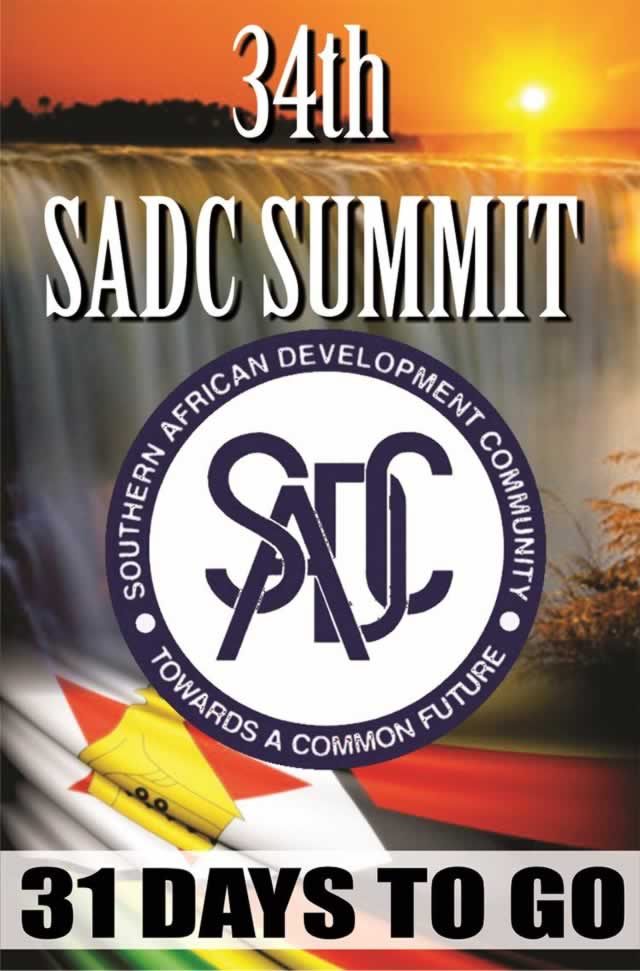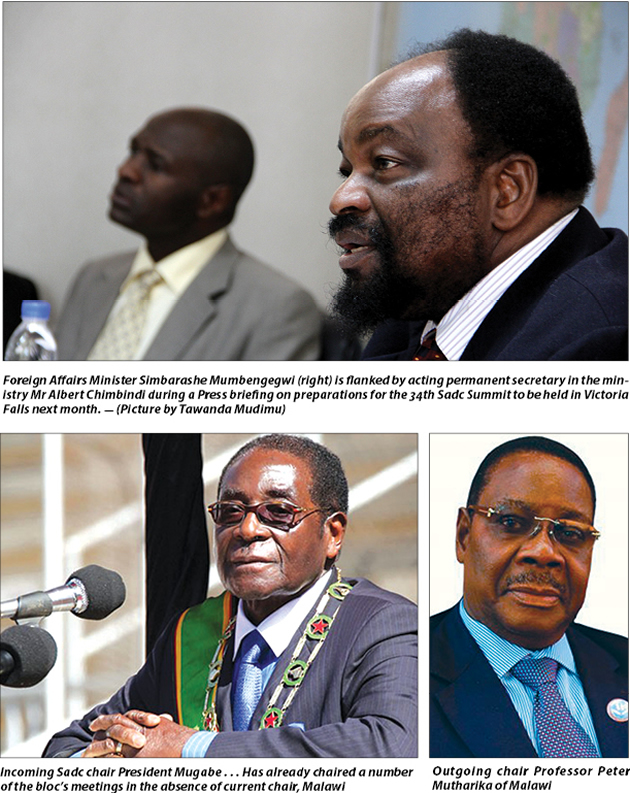EDITORIAL COMMENT: Value addition will transform Sadc

 AS Zimbabwe prepares to host the 34th Sadc Summit in Victoria Falls in 30 days, issues relating to beneficiation and value addition for the region’s diverse natural resources will take centre stage.
AS Zimbabwe prepares to host the 34th Sadc Summit in Victoria Falls in 30 days, issues relating to beneficiation and value addition for the region’s diverse natural resources will take centre stage.
The Summit will run under the theme: “Sadc Strategy for Economic Transformation: Leveraging the Region’s Diverse Resources for Sustainable Economic and Social Development through Beneficiation and Value Addition”.
The theme of the Summit resonates well with Zim-Asset, particularly the value addition and beneficiation cluster. There has been commendable progress on setting up value addition particularly by local mining companies. At its analyst briefing on Monday, Bindura Nickel Corporation confirmed the need for beneficiation when management said beneficiating will improve payability, eliminate penalties on deleterious minerals and significantly reduce transportation.
At present of the C1 costs of US$11 568; US$5 000 relates to selling nickel concentrates. This is a penalty on the business as it just gives the mine 65 percent payability on its resource. The next logical step is to restart the smelter so that there is further beneficiation.
Over the years, Southern Africa has not been able to fully benefit from its natural resources, particularly minerals which are often exported in their raw form. This has deprived not only regional countries, but most African countries of the much needed revenue that could have been channelled towards improving the livelihoods, infrastructure development and regional economies.
As such, the theme of the Summit has come at a right time.
When African leaders meet in Victoria Falls, it would be imperative that they adopt a holistic regional approach to transform the region from being a supplier of primary products.
Even beyond African borders, Indonesia has banned all exports of nickel to promote beneficiation. The Summit should also focus on the consolidation of the market for the goods produced in the region.
This is why the Sadc, Common Market for Eastern and Southern Africa and the East Africa Community Tripartite agreement which is expected to establish a grand Free Trade Area is a noble idea.
Bilateral, regional and intra-region trade have been key drivers of economic growth for many African nations. Sadc and other regional trade blocs, the Comesa-EAC-Sadc agreement aims to boost intra-regional trade and connect the blocs’ 26 nations.
The Comesa-EAC-Sadc Tripartite agreement will usher in a new concept in that it will promote the development of intra-regional infrastructure development and enhance cross-region investment.
Zimbabwe must position itself to take advantage of the creation of the Free Trade Area, which gives business access to a combined population of some 600 million people and a Gross Domestic Product of about US$1 trillion.
The FTA will present local businesses with access to new markets, cultures and exposure to new technology while at the same time presenting a grand opportunity to export Zimbabwean products.
Zimbabwe and investors should not be concerned about constrained demand in a perceived small population of about 13 million people when a population of about 600 million people is awaiting in both Comesa and Sadc.
In other words investors, both local and foreign should not view Zimbabwe as an isolated market but as part of a larger integrated market.
Zimbabwe must follow through regional and intra and inter-regional trade agreements to access the full benefits of the enlarged markets.
This will help the country’s exports leapfrog imports which, in June, slowed to US$2,99 billion from US$3,92 billion last year same period.
Latest data from ZimStat shows that exports were at US$1,22 billion from US$1,54 billion last June.
The Comesa Customs Union was launched by President Mugabe in 2009 but Zimbabwe is yet to enjoy the benefits due to uncompetitiveness of locally produced goods when compared with regional products. This is the reason why the country has been recording trade deficits with all its trading partners. The 26 member countries of the Tripartite make up 57 percent of the population of the African Union and just over 58 percent in terms of contribution to GDP. This makes the Tripartite vital to the envisaged single market and continental integration of the African Economic Community.
Zimbabwe should push for the removal of trade obstacles that include: the lack of economic diversification, overlapping memberships, which can hinder harmonisation processes as well as the enforcement of unified rules of origin and infrastructure deficiencies.







Comments